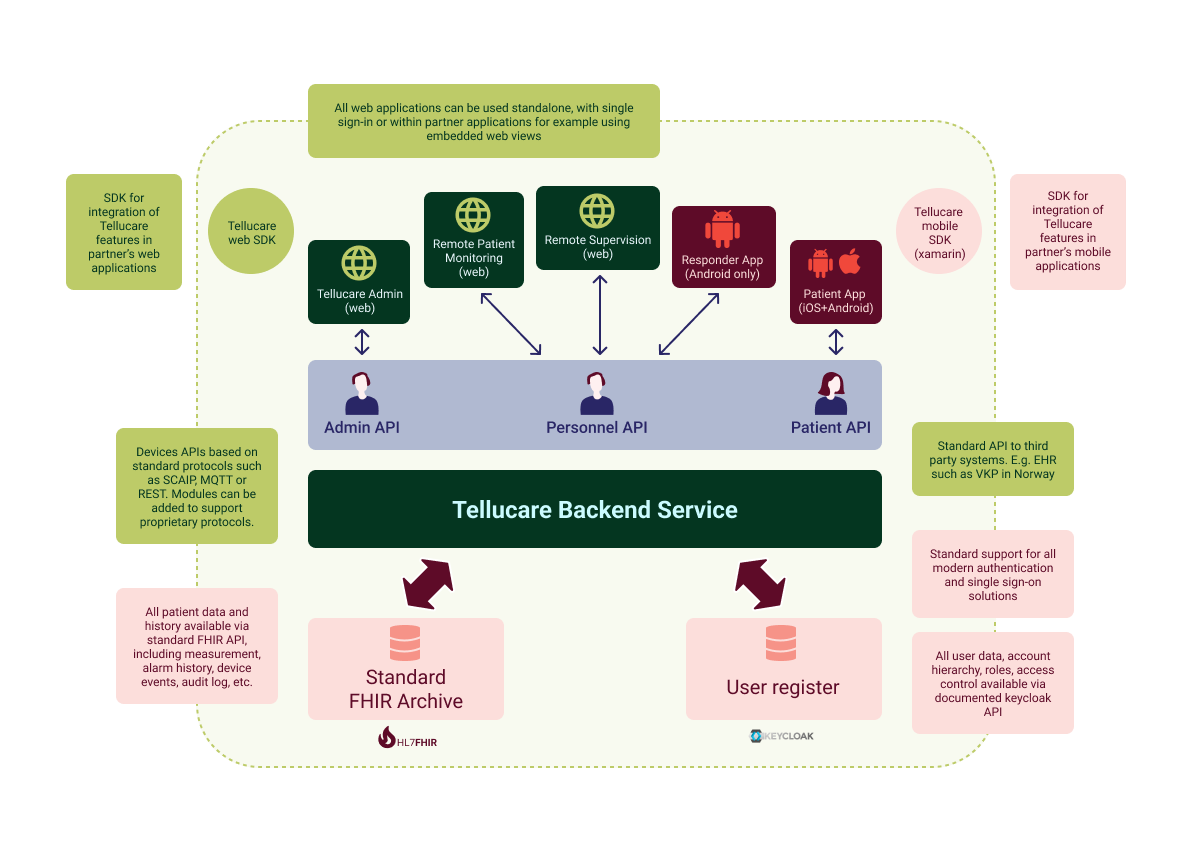.jpg?width=300&name=tellhumans-some-launch-04-1-2048x1152%20(1).jpg)
TelluCare Sandbox
Facilitating collaboration and enabling innovation that contributes to the development of digital care-services within the healthcare industry, is our passion. The TelluCare sandbox enables innovative organisations to achieve a sustainable way of providing care-services as a part of our ecosystem. TelluCare Sandbox is also our own toolbox where we enable the integration of TelluCare to other ecosystems – subsequently enabling an ecosystem of ecosystems. We believe this two-way openness is crucial to fully exploit potential opportunities and nurture innovation, enabling sustainable healthcare-services which considers both today’s and tomorrow’s needs.
To enable an ecosystem of ecosystems, the TelluCare sandbox goes beyond only publishing TelluCare’s APIs. Below you will find the key facilities for partners to join and integrate with the TelluCare ecosystem, and for TelluCare to integrate and be part of other ecosystems.
Overview of the main interaction and integration-points:
To view the image in full-size, right-click it and click “open in new tab”.
Tell the reader more
A key feature to integrate as part of the ecosystem is single sign-on. TelluCare’s ID provides the necessary APIs and mechanisms to enable single sign-on for the ecosystem-partners across the applications in the TelluCare ecosystem, and beyond. It enables all the relevant standard APIs and protocols, such as OpenID Connect, OAuth, and SAML.
This allows features such as:
- Single sign-on for multiple applications
- Identity brokering – allowing external identity providers to be used to authenticate users (either national ID-providers, e.g. ID-porten and Helse ID, or the customers own ID provider, e.g. AzureAD)
- User-management through an administrative interface and API-services
- Fine-grained access control-services which can be used to define access rules, and used by applications to determine if a user should have access to a resource
- Built-in support to connect to existing LDAP or Active Directory servers
- Enabling login with social networks such as Google, Facebook and GitHub
- Industry Standard Protocol support
- TelluCare ID as an ID federator (e.g. to allow ecosystem partners to have single sign on based on Helse ID through TelluCare ID)
More elaborate description of TelluCare ID is to be found here.
The TelluCare ID builds on the widely accepted KeyCloak open-source project. All Keycloak APIs and protocols are provided by TelluCare ID. All relevant documentation including detailed specifications of APIs and how to take part in the Single Sign On scheme of the TelluCare ecosystem can be found here.
Device integration
TelluCare supports a set of standard protocols and technologies for device integration. This enables partners to integrate their devices by applying widely accepted and standardized technologies. The most prominent are:
- Social Care Internet Protocol (SCAIP). SCAIP builds on another widely accepted standard protocol, the Session Initiation Protocol (SIP), and is used for sending and receiving alarms and notifications over an IP-network. New devices can easily be added to the TelluCare ecosystem through SCAIP. The SCAIP protocol specification is available here
- Message Queuing Telemetry Transport (MQTT), is a widely accepted standard messaging protocol for the Internet of Things (IoT), published by the OASIS standardization body. It is designed as an extremely lightweight publish/subscribe messaging transport that is ideal for connecting remote devices with a small code footprint and minimal network bandwidth. TelluCare supports MQTT and partners can easily integrate into the TelluCare ecosystem applying MQTT. The MQTT specification is available here
- Representational State Transfer (REST). REST is a set of guidelines that can be applied for interaction between services and components over the standard Internet protocol HTTP/HTTPS. REST based APIs are faster and lightweight, with increased scalability and in particular suitable for Internet of Things (IoT), mobile app development. TelluCare enables integration and interaction via REST.
- Bluetooth. Device integration via Bluetooth is particularly relevant for medical devices. Integration via Bluetooth is straight forward with TelluCare. TelluCare offer various options for Gateways that handles Bluetooth devices including stationary Personal Health Gateways, SmartPhones, tablets. TelluCare is also enabled to integrate and apply existing hubs such as safety alarm GWs (e.g., Novo GW and NoIsolation KOMP) and use these as GW for bluetooth devices.
If standards such as the ones listed above are not supported for a device, a proprietary integration can be developed. This must be planned bilaterally. TelluCare comes with a set of tools and provides open APIs to make such integrations run smoothly. To do so, we can apply Tellu ThingML open source framework to support the development and management of more proprietary device integrations.
Data Layer Integration
To foster the fast and smooth evolution of the TelluCare ecosystem and enable data interoperability and integration with other ecosystems, the TelluCare datamodel complies with the widely accepted HL7 FHIR standard. TelluCare provides a FHIR database for data storage, this to make data exchange and data layer interoperability smooth, efficient and standardised.
Fast Healthcare Interoperability Resources (FHIR) is an open standard for health data-exchange published and maintained by the HL7 International , The standard offers a wide range of resources that can be applied in many contexts within the health domain. It enables ease of integration for web applications, mobile applications, cloud services etc. In addition to define a comprehensive datamodel and ontology for the eHealth domain, the standard also specifies how to implement RESTful API’s for FHIR services, how to implement FHIR resource search, how to facilitates data-sharing between eHelath systems and much more. In TelluCare all these features are enabled to foster integration and interoperability both within the TelluCare ecosystem and with external eHealth systems and ecosystems. The Norwegian directorate of eHealth is recommending the use of FHIR for data-exchange in the healthcare-sector.
Online resources to get familiar, experiment and test application of FHIR includes:
- An introductory example of applying FHIR.
- A set of publicly available open FHIR servers available for experimentation and testing is available on the the official FHIR wiki
- Synthetic Mass is a recommended source of small and large FHIR data sets for experimentation and testing
Some key FHIR resources of TelluCare is listed here
Embedding application-modules
An important aspect to the scalability of a software ecosystem is to keep the coupling between modules low. This allows application vendors to focus on the core functionality of their modules, while allowing the assembling of highly customizable solutions by combining modules from different vendors. TelluCare is built to make it easy to:
- Embed components of TelluCare into third-party-applications. Each TelluCare module includes dedicated user interface components, such as web components which can be embedded into the external application. An example is a camera supervision module that can be embedded through a web view in partner health personnel applications, a patient dashboard, or a report which can be accessed via a URL.
- Integrate third-party-components with TelluCare applications. For instance, as a part of a device integration, the device vendor typically offers a tool for the administration, monitoring and configuration of the device. The full power of those tools can be provided via TelluCare by embedding the interfaces of those tools within the TelluCare applications (as opposed to re-implementing a sub-set of the functionality in a proprietary way). Another example is the possibility to embed video conferencing solutions via web views.
For web-based applications, the integrations via web views is a great pattern to ensure low coupling, clear responsibilities as well as strong security and data protection. This is due to the segregation of the data related to each module. The data is served from each application directly to the client without being proxied or processed unnecessarily. TelluCare web applications are built around a set of re-usable web components which can be provided to partners as an SDK.
For native mobile applications, all the TelluCare apllications are built around a Xamarin framework. This mobile SDK can be provided to partners for specific integration tasks.
TelluCare-specific APIs
While the integration among components of a modern software ecosystem must be carried out primarily using modules, standard APIs and single-sign-on, it is sometimes necessary to have a tighter integration between specific components. In such cases it might be necessary to integrate with the specific APIs of the TelluCare platform. The full range of APIs used by the TelluCare services is available for partners to use. This includes:
- TelluCare patient API including all the operations used in the implementation of the Tellu patient application for remote patient monitoring
- TelluCare personnel API including all the operations used by the different health personnel roles from the administration of patients to the medical follow-up or alarm responses. The APIs are divided into modules corresponding the different roles and workflows
- TelluCare Administation API including all the operations for account management and user management
Those APIs are defined in GraphQL. GraphQL is an open-source data query and manipulation language for APIs, and a runtime for fulfilling queries with existing data. GraphQL provides a complete and understandable description of the data in your API, gives clients the power to ask for their exact needs, makes it easier to evolve APIs over time, and enables powerful developer tools.




